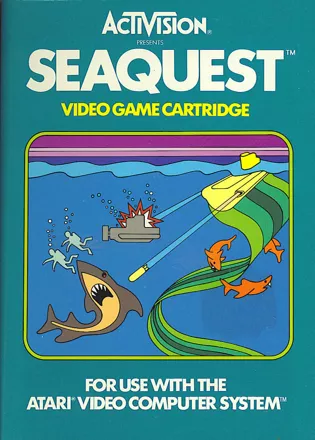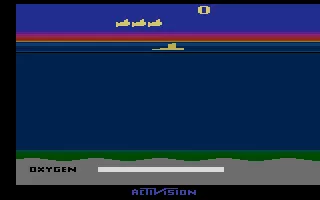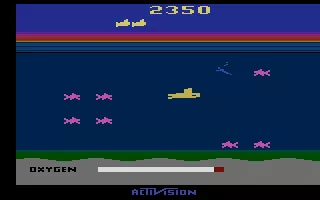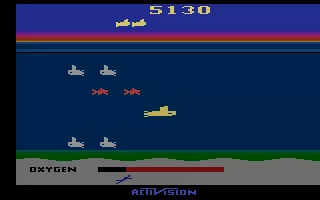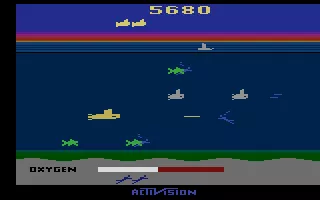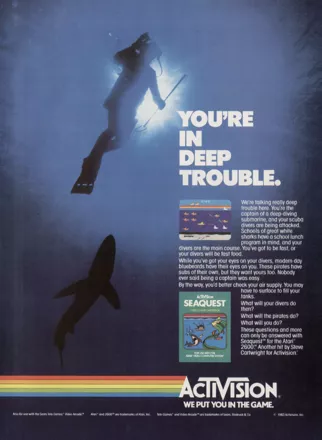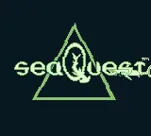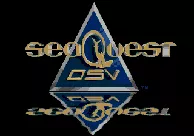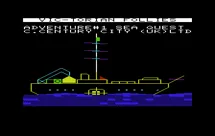Seaquest
Description
Your divers are out in the ocean collecting treasure; now that they have found what they're looking for, you need to pilot a submarine and return them safely to the surface! You can carry up to six divers at a time, and when you safely return the six divers to the surface, you move on to the next, faster level. Your sub has a limited supply of oxygen; if your oxygen meter gets too low, you will need to surface to replenish the oxygen supply. If you surface with less than six divers, you lose one of the divers. If you surface with no divers at all, then your sub will explode. To make your task more challenging, numerous giant sharks and enemy submarines travel throughout the waters and can destroy your sub on contact. To help out with these enemies, you have an unlimited supply of torpedoes that can be fired to destroy both the sharks and subs. As the levels progress, the game gets faster and more enemies appear at a time.
Groups +
Screenshots
Promos
Videos
Add Trailer or Gameplay Video +1 point
See any errors or missing info for this game?
You can submit a correction, contribute trivia, add to a game group, add a related site or alternate title.
Credits (Atari 2600 version)
| Conceived and designed by |
Reviews
Critics
Average score: 74% (based on 9 ratings)
Players
Average score: 3.9 out of 5 (based on 17 ratings with 1 reviews)
The Good
Everyone knows about the “impossible jump” but I never heard it described before. The “impossible jump” is what makes videogames so exciting. It’s the magical game moment that as gamers we try to recapture every time we play.
I personally term this the “impossible jump” because I base this on the game that most people would first experience this: Super Mario. Super Mario would be the game that would open up the public’s imagination to the idea that what seems impossible is in fact tenable. In Super Mario players are treated to our titular hero bounding straight across the screen in completely superhuman fashion (it isn’t called Meek Mario for nothing). Just years earlier he was bounding over barrels in Donkey Kong one at a time as laymen do; now he is making spectacular leaps across chasms of lava and up atop high flying flagpoles.
This idea isn’t just restricted to side-scrolling platform games, but every genre. The “impossible jump” could mean slipping through the smallest gap between cars in a racer to win, or pulling off a life-saving combo in the nick of time in a fighter, or just the exhilaration of managing to survive to the next save point on just one hit point. String a couple of these together in a row and these become the great gaming moments we’ve all had playing video games; these become the victory stories we regale others with. It is doing the impossible when there is no other choice.
Modern games understand the “impossible jump” theory and use it to their advantage to create the sensation of an experience that is more exciting that what it actually is. A game will remind you of your game mortality by showing an injured avatar or damage to your vehicle. A game will also present enemies as being overly strong or dangerous when they are in fact easy to defeat. However, a game will always take great pains to show you how powerful you, as by giving power-ups to enhance a characters already powerful skills The idea is to present a wide gap between you and the goal you must achieve, but yet give you the tools to do so. In Super Mario this is achieved by establishing large spans to traverse over and by giving Mario the super ability to jump said spans.
“The impossible jump”. It’s the player’s opportunity to show off the hand-eye co-ordination you’ve learned by neglecting your homework. However, these appear from time to time in modern games; with the frequency of save points, the concept of a health meter as well as health pick-ups players can now avoid the “impossible jump” and the many in-game deaths you will suffer from.
Of course, it was never always this way back in the day of old-school gaming. Back then, it wasn’t called old-school gaming, of course. You run into a log, you die. You get struck by a bullet, you die. You fall off a cliff, you have to start all over again at the beginning of the level. It is for these reasons that old-school games have a bad rap from modern gamers. Complaints are often made towards all the things absent from the Golden Age of video games: no cut scenes, none or little music, bad graphics, no online play, bad repetitive play and so forth. However, I think this unforgivable game play is what turns most off from experiencing what could be very fun and rewarding game play.
As empowering as it was to feel a connection to the on-screen hero as denoted by a green square, successful videogames of the time were fun and had good game play for one simple reason: because they had to be. Videogames at that time had to have good game play because it was too expensive to rely on other factors, like good graphics or music. If your hero didn’t have a face or arms you could overlook such trifling problems if you could play it for hours and enjoy it. Game makers had to deliver the “impossible jump” with less resources than they have today.
That’s why Activision’s Seaquest (1983) is such an important game: it is a prime example of being a fun game that delivered more with less back in the time when the rules were still being written. As per the game description this is a 2D shooter that places the player in control of a submarine trying to rescue divers while avoiding or destroying sharks or enemy subs. All the action takes place on one screen thus localizing the action. Once you rescue six divers you then can return to the surface and be relieved of your passengers only to start yet another wave that is now quicker than before.
This is yet another game that is easy to learn but hard to master. The submarine is equipped with an infinite supply of torpedoes, and so the initial strategy is to destroy all your enemies and then rescue the divers. However, at higher levels the enemies move so fast your weapon actually loses effectiveness. Imagine that: being given the ability to destroy your enemies in a videogame but not having that as your primary (visceral) objective. Remember, this was 1983: people wanted to kill things, especially if the choice is given to them.
This change in strategy is described in the manual as “Silent Running”. The idea is to refrain from using torpedoes and pick up divers, all the while dodging enemies without striking back. If the games concept was such (and there are games like that) if would have done satisfactorily. This inclusion of a weapon is to emasculate the player with the ability to take matters into his own hands, something that is popular in almost every game. However, the torpedoes can take out the first enemy in a line of three, but not all of them. This means your weapon is not what will save you.
In that case, what will? Of course, I mean “the impossible jump”. You are running out of air, the siren is blaring, you still have two divers to pick up, and there are enemy subs and sharks zooming by. In this scenario, you have no choice: you are left to your wits to pull off six impossible things in a row (all before breakfast if you want to go to the Restaurant at the End of the Universe)—all just to get to the next level, where it happens all over again.
This change of tactics and the use of the weapon as a diversion for your senses is ingenuous. A 2D non-scrolling side shooter with depth? People, this was 1983. Ewoks are universally loved, as is the child-friendly Michael Jackson. People had feathered hair and acid wash jeans. At this time there’s no motion capture or CGI, games were very basic, and yet we have a shooter that is not a shooter? What is it?
Playing Seaquest is a Zen experience. I know my ass will get kung fued by any half-pint monk of Shaolin for spreading such lies, but I’ll explain the best I can.
Seaquest is a non-scrolling side shooter where you stay in place; you’re not going anywhere, you don’t want to go anywhere, you can’t go anywhere. This is a shooter where the goal isn’t to shoot everything you can, but to save people. As useful as your weapon is, it can’t help you at the higher levels.
In Seaquest you finish a level only to start it over again, with no discernible difference except for an increase of speed (it maxes out at one point). Then why do this? Why go through all this trouble and hassle and hand cramping when it’s so much easier not to? The video game answer is because it is fun. The Zen answer is simply because you have to do what you have to do. It’s like a chore, like washing the dishes or fixing a hundred motorcycles. It’s meditative, if not meditation. You are a player without want: you don’t want to go any where, you don’t want to kill subs and sharks needlessly. You do want to rack up points and get to the next level, but that is problematic because doing so will make it harder for yourself. So there is no want, no desire… then what to do? Just do what you have to do: save divers, rack up points, keep pulling off “impossible jumps”… all because in this game there’s nothing else for you to do or be.
I can’t properly quote this, but Zen isn’t just found on a misty mountain top but also in front of every computer monitor.
The Bad
How they ever turned this into the series Seaquest: DSV with Roy Scheider I have no idea. I never thought the guy driving the sub is the guy from Blue Thunder and 52 Pick Up. Hey, JAFO!
And no sequel? If this was a modern day release it would sure to see 3 or four reiterations of the same idea until we have an underwater dating sim.
The Bottom Line
The elderly never get any props. Needless to say, a great game.
Atari 2600 · by lasttoblame (414) · 2007
Trivia
High score reward
If you got 50,000 points in this game, you could send in a photo of your screen to Activision and they would send you a Sub Club patch.
Awards
- Retro Gamer Magazine
- Issue 46 - named #17 in the "Top 25 Atari 2600" Games poll
Information also contributed by PCGamer77.
Analytics
Identifiers +
Contribute
Are you familiar with this game? Help document and preserve this entry in video game history! If your contribution is approved, you will earn points and be credited as a contributor.
Contributors to this Entry
Game added by Servo.
Windows, Xbox 360 added by Alaka.
Additional contributors: Alaka, LepricahnsGold.
Game added September 25th, 2003. Last modified January 18th, 2024.
